![]()
|
|
|
Stoke-on-Trent - Potworks of the week |
Falcon
Works, Stoke
these are the works of W.H.
Goss, off London Road, Stoke
- not to be confused
(which they often are) with the Falcon Works of J.H. Weatherby
in Hanley.
The business and works since 1956
|
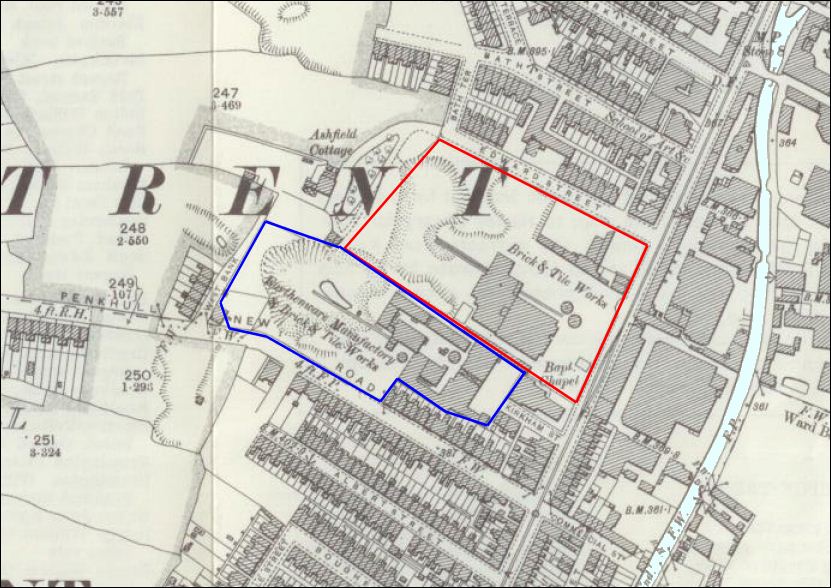
1898 map showing the location
of the Falcon Works of W.H. Goss (red) and the works of H.G. Kirkham (blue)
to the right is the Newcastle to Stoke Canal
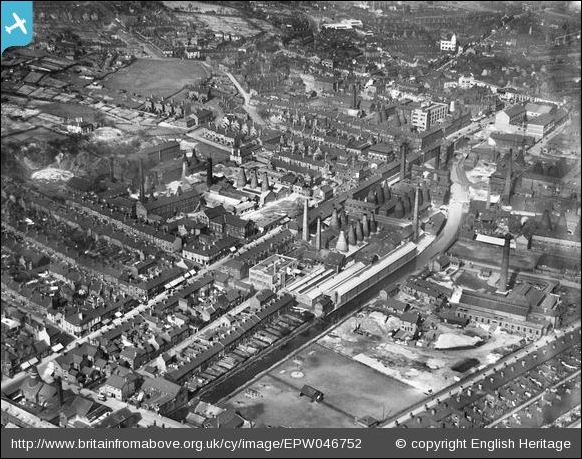
Pottery works around London
Road and the Newcastle to Stoke canal - 1935
photo: britain from above
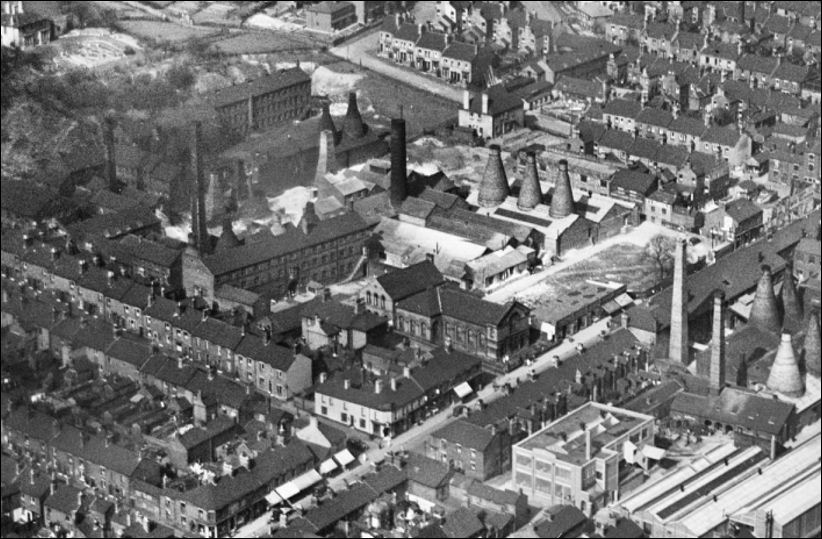
in the centre of the picture
is the Falcon Works of W.H. Goss and the works of H.G. Kirkham
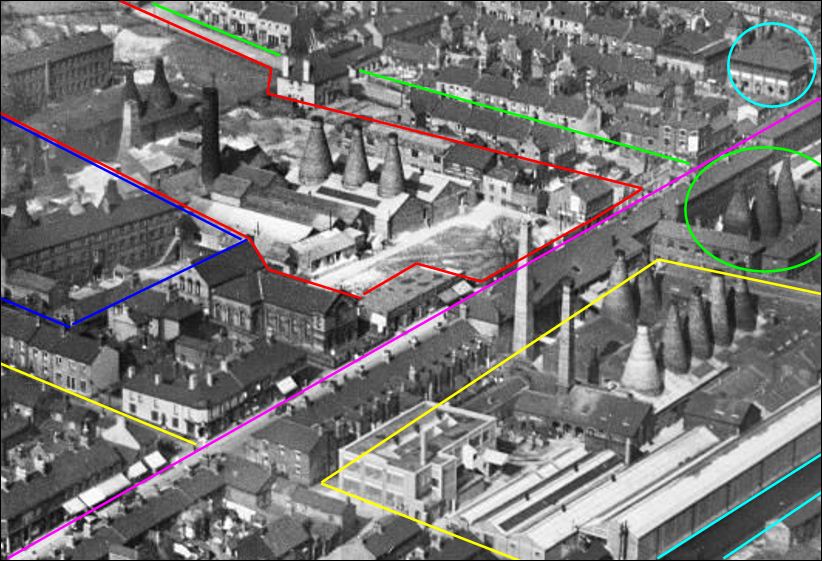
| Red outline area | The Falcon Works of W. H. Goss |
| Blue outline area | The London Road works of W. Kirkham |
| Purple Line | London Road |
| Yellow Line | Penkhull New Road |
| Green Line | Edward Street (now called Sturgess Street) |
| Light blue lines | Newcastle to Stoke Canal |
| Light blue oval | Stoke Public Library |
| Green oval | Mintons Ltd. china and earthenware |
| Yellow outine area | Campbell & Co. tile manufacturers |

in the centre is the works of
W. H. Goss and to the left is the works of W. Kirkham
in the foreground (on the opposite side of London Road) the bottle kilns
of one of Minton's factories and also the Campbell & Co tile works
photo:
britain
from above
(photo: 1935)
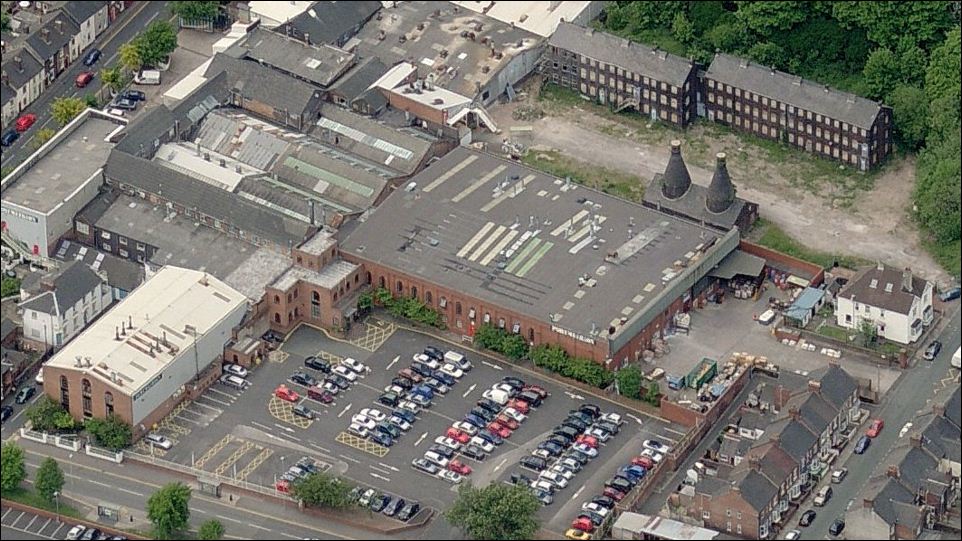
the pottery works of
Portmeirion dominate the former sites of both the Kirham and Goss factories
in the top right corner the 1902-05 extension to the Falcon Works can be seen
in both photos
photo: Bing Maps (2013)
Photographs taken at the Falcon Works - from 28DaysLater.co.uk
the images are © to the photographer.
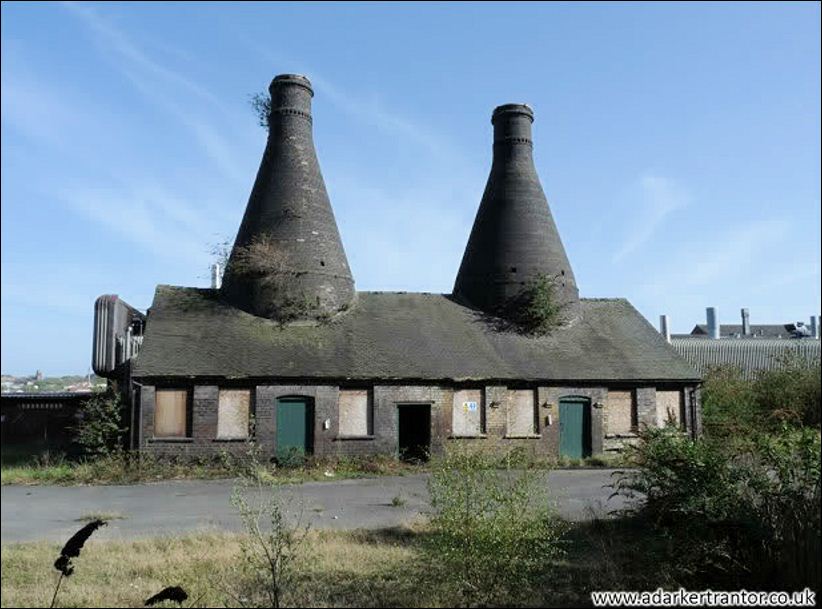
the two remaining bottle
kilns on the Falcon Pottery site
these are downdraught glost ovens with circular hovels in a range
'glost'
is a second firing to fix the glaze over the pattern
the 'hovel' is the bottle shaped exterior (the actual kiln is inside)
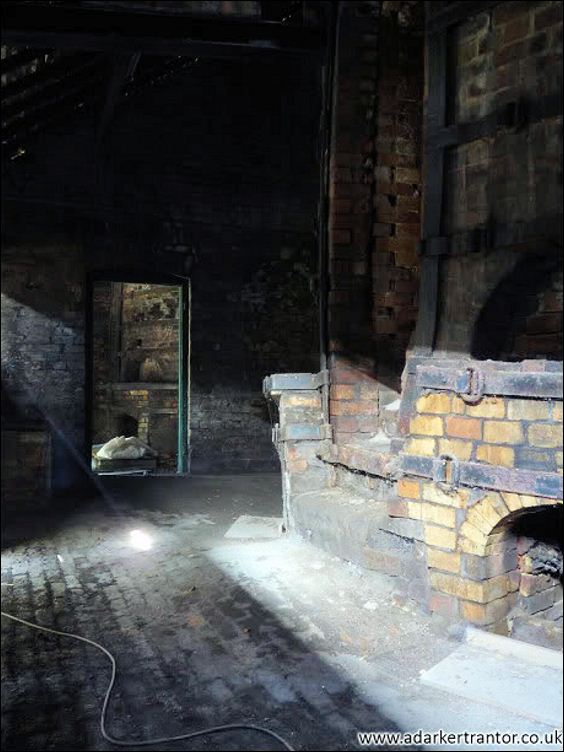
to the right is the kiln
inside the range
up the couple of steps is the
clammins (or doorway) into the kiln interior
around the kiln are the flues and firemouths
the iron bands (bonts) are set about 12 inches apart and run around the kiln
to strengthen it as it expands and contracts during firing
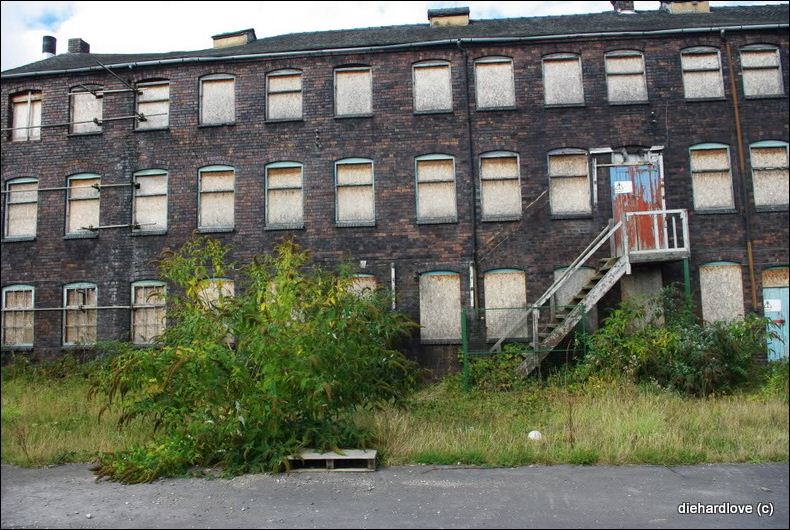
workshop and warehouse range
- built 1902-05 as an extension to the original works
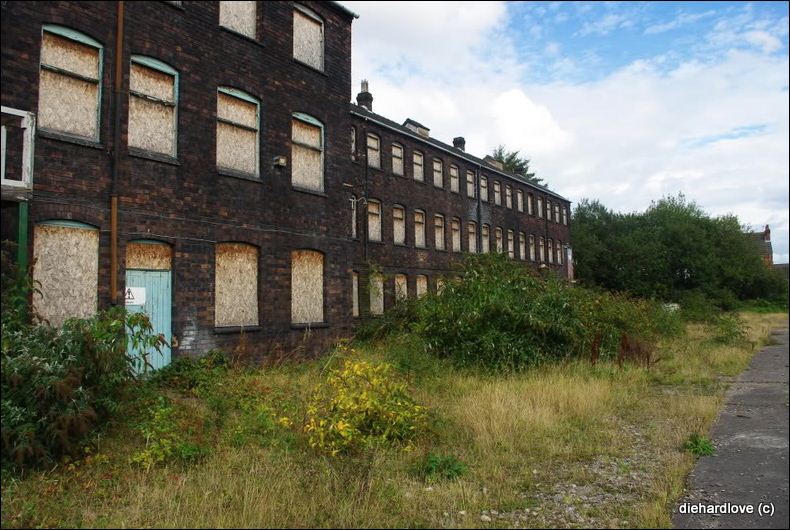
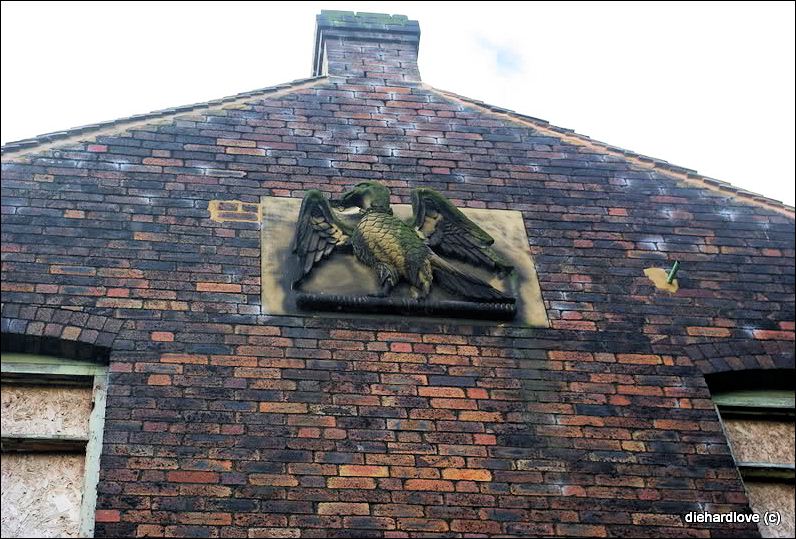
Stone plaque of falcon in
gable apex
the falcon was used as a mark on Goss ware
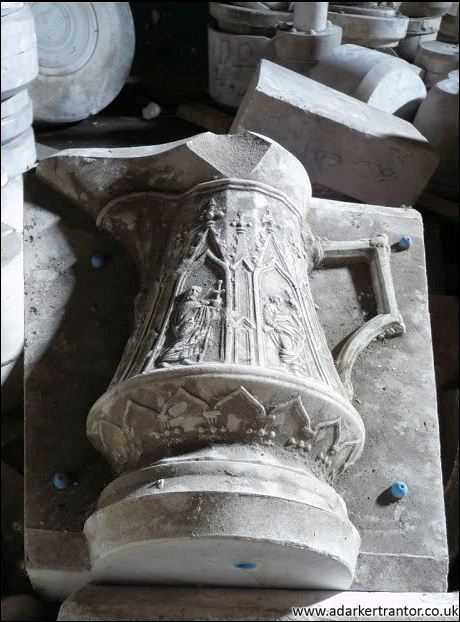
a 'case' for a slipware jug
this is the master that the plaster of Paris moulds are made from
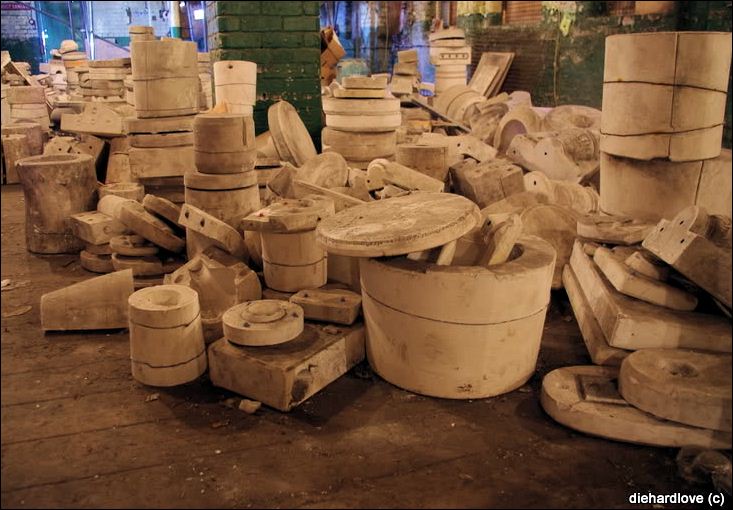
plaster of Paris moulds
liquid clay would be poured into
these moulds - the plaster of Paris absorbed
some of the water and then the clay formed a thin skin - the remains of the
liquid was poured out and the moulds split open to remove the pottery ready
for firing
|
Related pages
|